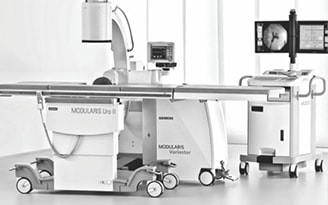Extracorporeal Shock Wave Lithotripsy (ESWL) is a non-invasive treatment of kidney stones using an acoustic or sound wave. ESWL is the least invasive of the common place modalities for definitive stone treatment but provides a lower stone free rate than other more invasive treatment methods, such as PCNL or Ureteroscopic manipulation. It is a day care procedure with minimal complications.
WHEN IS SHOCK WAVE LITHOTRIPSY USED?
Multiple factors are taken into consideration before implementing SWL. Very large stones are difficult to treat using SWL. The shape and size of the stone, the position where it is placed, kidneys condition and the patient’s overall health, everything is taken into consideration before an SWL. Generally, stones which are smaller than 1.5 cm in diameter are suitable for an SWL.
WHO ARE NOT THE RIGHT CANDIDATES FOR SWL?
Pregnant women
Patients with bleeding disorders, kidney disorders
Obese patients
Structurally abnormal kidneys like malrotation, pelvic kidney and horse shoe kidney etc.
PREPARATION PRIOR SWL
Can be done without any aneathesia; however anesthesia may be used to help the patient remain calm and still during the procedure; hence the patient is advised not to have or any fluids 6 hours prior to the procedure. Patients can continue their regular medications, but blood-thinning medications are stopped for around 5 days before the lithotripsy procedure. A mid-stream urine culture test is advised to confirm the urine’s sterility before the treatment.
SWL TREATMENT PROCEDURE
The patient is positioned on the SWL table and a soft, water-filled cushion is stationed on the abdomen or behind the kidney which helps the high-frequency waves to be transmitted to the stone. The patient is positioned in such a manner that the shock waves would be directed precisely at the target. Usually, the procedure takes about 45-60 minutes and around 1000-3000 shock waves to fragment the stones are applied.
At times, a tube (DJ stent) is slided through the bladder and threads it up to the kidney. These tubes also called as stents that are used to keep the ureter open. It is also used when there is a high risk of infection or the patient is not able to tolerate the pain. Post-treatment the patient is generally allowed to leave after an hour. Patients are advised to consume lots of fluids and then are asked to strain their urine through a filter in order to capture the stone fragments for testing.
WHAT CAN A PATIENT EXPECT AFTER THE PROCEDURE?
Post-treatment, the patient might experience abdominal pain and will possibly have blood in the urine. Some may even experience acute pain when the stone fragments pass through urine. Sometimes, the stone present is not entirely crushed, and further treatment is needed. Patients are advised to contact the doctor for any complications post-treatment such as the urge for urination after the bladder is empty or a severe pain even after having painkillers.
FOLLOW-UP CARE
Patients are advised to consume around three liters of fluids per day in order to help the passage of stone fragments. If there are not any complications associated with SWL, patients are instructed to meet the doctor after 2 weeks of the treatment. A kidney, ureter and bladder X-ray is advised prior to seeing the doctor as it helps him to evaluate the condition. Simple analgesics are usually required after the treatment. Only in certain cases, stronger medications are prescribed.

